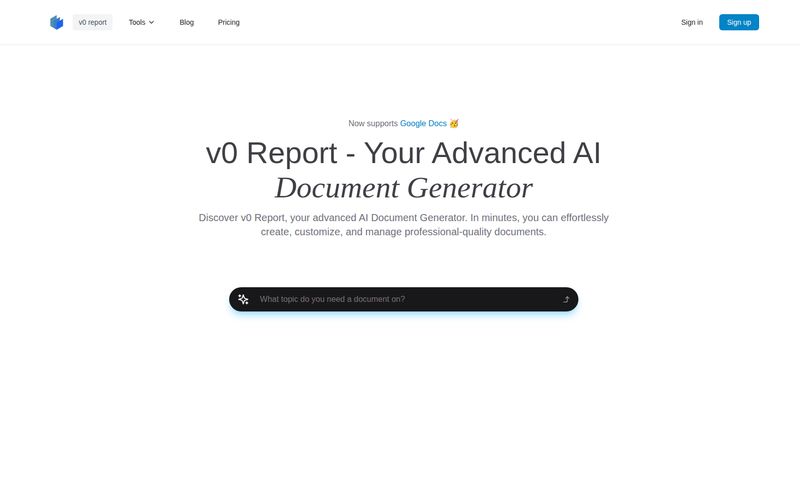For years, the world of deep learning frameworks has felt like a two-party system. You're either in Camp TensorFlow or you're waving the PyTorch flag. And for good reason! They’re powerful, they're established, and the sheer volume of tutorials and community support on Stack Overflow can pull you out of just about any coding nosedive.
But I've been in the SEO and tech game long enough to know that duopolies are made to be challenged. Every now and then, a new player steps onto the field, not with a flimsy wooden sword, but with a full suit of armor and a few tricks up its sleeve. Lately, I've been hearing more and more whispers about one such challenger: Huawei's MindSpore. And my curiosity is officially piqued.
Is this just another framework destined for the open-source graveyard, or is it something genuinely different? I decided to roll up my sleeves and take a look.
So, What Exactly is This MindSpore Thing?
At its core, MindSpore is an open-source AI framework, born out of Huawei's massive tech ecosystem. But calling it "just another framework" is a bit of an injustice. Its main claim to fame is its focus on being a
full-scenario
platform. That sounds like a bit of marketing fluff, I know, but what it means is pretty compelling.
Imagine you've spent weeks training a complex computer vision model on a beastly cloud server with all the GPU power you could want. Now, you need to deploy that same model onto a tiny, low-power camera on the edge of your network. Historically, that's been a massive pain, often requiring model conversion, simplification, and a whole lot of crossed fingers. MindSpore is built from the ground up to tackle this problem, aiming for a philosophy of "train once, deploy anywhere"—from the mighty cloud to the humble edge device.
Think of it as the Swiss Army knife of AI deployment. It’s designed to be adaptable, efficient, and to just... work, regardless of where you're running it.

Visit 昇思MindSpore
The Core Features That Caught My Eye
Every framework has its headline features, but a few of MindSpore's really stood out to me, not just as bullet points on a feature list, but as genuine solutions to problems I've personally wrestled with.
Automatic Differentiation That Doesn’t Feel Like a Chore
If you've ever built a neural network from scratch, you know the headache of calculating gradients. Automatic differentiation is the magic that saves us from that calculus nightmare. While all modern frameworks have it, MindSpore's approach, based on source code transformation, feels incredibly clean. It’s designed to be more intuitive for developers, which in my book translates to less time debugging and more time actually innovating. It’s a subtle difference, but one that can save you hours of frustration.
The Distributed Training Magic
Training today's monstrously large models (looking at you, LLMs) on a single machine is just not feasible. Distributed training is a necessity, but configuring it can be a nightmare of its own. MindSpore boasts automatic distributed parallel training. It can analyze your model and data, and then figure out the most efficient way to split the workload across multiple devices or nodes. This is huge. It takes a process that often requires a specialized engineer and makes it accessible. Its a major step towards democratizing large-scale AI.
The Good, The Bad, and The… Ascend?
Alright, no platform is perfect. Let's get down to the nitty-gritty. I’m a big believer in looking at the full picture—the shiny promises and the potential potholes.
On the one hand, MindSpore has a lot going for it. It's open source, which is always a massive plus. The website shows some impressive community numbers—over 12 million users and thousands of contributors. That's not a small-fry operation. It also has broad hardware support for CPUs and GPUs, so you’re not immediately locked into a specific vendor.
However, there's a pretty big asterisk. For peak performance, MindSpore is clearly optimized for Huawei’s own Ascend AI processors. This isn’t necessarily a dealbreaker—it makes sense to optimize for your own hardware—but it's something to be aware of. If you're not running on Ascend, are you leaving performance on the table? Probably.
And while the community numbers are growing, it’s not yet the same universe as PyTorch or TensorFlow. You might have to rely more on official documentation than on a random blog post from 2019 to solve a niche problem. For some, thats a dealbreaker. For others, it's just the price of being an early adopter.
MindSpore vs. The Giants: A Quick Showdown
How does it stack up against the reigning champs? Here’s my quick-and-dirty comparison table:
| Aspect | MindSpore | PyTorch | TensorFlow |
|---|---|---|---|
| Core Philosophy | Full-Scenario (Cloud-Edge-Device) & Ease of Development | Research-first, Flexibility, Pythonic | Production-first, Scalability, Ecosystem (TF Extended) |
| Best For | Cross-device deployment, especially in the Huawei ecosystem | Rapid prototyping, academic research, NLP | Large-scale production deployments, mobile & web (TF Lite/JS) |
| Learning Curve | Moderate; less community content means more doc-diving | Gentle; feels very intuitive for Python developers | Steeper initially (especially TF1.x), but TF2/Keras is much easier |
Getting Your Hands Dirty with MindSpore
Okay, so you're intrigued. What's it like to actually use? The website offers a pretty clear "Quick Start" guide, which I appreciate. You can select your OS, backend (CPU, GPU, or Ascend), and it spits out the exact installation command. Simple.
Beyond the core library, there’s a whole ecosystem of toolkits. Things like MindSpore Insight for visualization and debugging, MindSpore Armour for security and privacy protection, and a whole zoo of pre-trained models. This tells me that Huawei isn't just throwing a library over the wall; they're trying to build a complete, end-to-end development environment. And when it comes to pricing? It's open-source, so it's free to use. Of course, the real cost comes in the form of hardware and engineering time, but there's no license fee to worry about.
Who is MindSpore Actually For?
After digging in, here's my take. MindSpore probably isn't for the absolute beginner who's just starting their AI education. The wealth of tutorials for PyTorch makes it a much gentler starting point.
Instead, I see MindSpore as a powerful tool for a few key groups:
- The Performance-Obsessed Researcher: Someone who needs to eke out every last drop of performance and is working on large-scale models where automatic distribution is a godsend.
- The Edge AI Developer: If your primary focus is deploying sophisticated models on resource-constrained devices, the "full-scenario" promise of MindSpore is incredibly attractive.
- Companies in the Huawei Ecosystem: This one's a no-brainer. If you're already using Huawei cloud or hardware, aligning your AI development with MindSpore makes a ton of sense.
It’s for the developer who isn't afraid of being a bit of a pioneer, who is willing to trade the comfort of a massive community for the potential benefits of a new and thoughtfully designed architecture.
Is It Time to Switch to MindSpore?
So, the million-dollar question: should you drop everything and switch? Probably not. TensorFlow and PyTorch aren't going anywhere. But should you ignore MindSpore? Absolutely not.
MindSpore isn't trying to be a PyTorch clone. It’s carving out its own identity focused on developer experience and deployment flexibility across an entire spectrum of hardware. It represents a different way of thinking about the AI development lifecycle. It’s a serious project with serious backing and some genuinely smart ideas.
My advice? Don't switch. Experiment. The next time you have a side project, especially one involving edge devices, give it a spin. Run `pip install mindspore-gpu` and see how it feels. The best way to know if a tool is right for you is to get your hands on it. You might just be surprised by what you find.
Your MindSpore Questions Answered
- Is MindSpore free to use?
- Yes, MindSpore is an open-source project released under the Apache 2.0 license. It's completely free to download, use, and modify. Your only costs would be related to hardware and development resources.
- Do I need Huawei's Ascend hardware to run MindSpore?
- No, you don't. MindSpore runs perfectly well on standard CPUs and NVIDIA GPUs. However, it is highly optimized for Huawei's Ascend AI processors, so you'll likely see the best performance on that specific hardware.
- How does MindSpore compare to TensorFlow and PyTorch?
- It competes directly with them but has a different focus. While PyTorch excels in research flexibility and TensorFlow in production scalability, MindSpore's main strength is its "full-scenario" support, aiming to simplify the process of training a model once and deploying it anywhere from cloud servers to small edge devices.
- Is MindSpore good for beginners in AI?
- It can be, but it might be a bit more challenging than starting with PyTorch. The community is smaller, so there are fewer third-party tutorials and forum discussions. Beginners might find the massive learning ecosystems around PyTorch and TensorFlow more forgiving.
- What kind of applications is MindSpore best suited for?
- It's designed to be general-purpose, with strong toolkits for computer vision (CV) and natural language processing (NLP). Its real sweet spot is for applications that require deployment across a mix of hardware, particularly those involving edge AI, IoT devices, and distributed cloud training.
Reference and Sources
- Official MindSpore Website
- MindSpore Gitee Repository (Primary open-source home)



